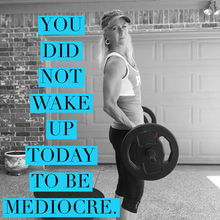Ironman Training in the Heat- Best Practices for Nutrition and Hydration
Triathlon Training in the Heat: Best Practices for Nutrition and Hydration
As an Ironman Certified Triathlon Coach, I understand the challenges athletes face when training and competing in intense heat. We live in Texas and I do recall that last summer we had over 100 days of 100+ temperatures here in College Station. Whether you're preparing for a race in a scorching climate or gearing up for a hot summer event, proper heat training is essential for performance and safety. Here's a comprehensive guide to help you navigate training in the heat and excel on race day:
1.Start Early: Heat adaptation doesn't happen overnight. Begin your heat training regimen at least 6-8 weeks before your event to allow your body sufficient time to adjust to higher temperatures.
2. Gradual Progression: Increase the intensity and duration of your workouts gradually as you acclimate to the heat. Pushing too hard too soon can lead to exhaustion or even heat-related illnesses.
3. Incorporate Hot Yoga: Regular hot yoga sessions can help acclimate your body to heat stress. The combination of heat and physical exertion in a controlled environment prepares your body for the demands of racing in high temperatures. If you are like me, I love hot yoga and I like it even better when the temperature in the room is over 100 degrees F. If you are new to hot yoga, you can always take frequent breaks at your first few classes by leaving the room and getting water.
4. Utilize Infrared Sauna Training:Consider incorporating indoor cycling sessions at a HotWorx studio, where infrared sauna and ride for 15 minutes then when the session was over I came out in the air conditioning to drink then went back in for the next 15 minutes and so on. I gradually worked my way up to 90 minutes of cycling in the intense heat.
5. Stay Hydrated and Know Your Sweat Numbers: Hydration is key when training in the heat. Drink plenty of fluids before, during, and after your workouts to replace lost fluids and electrolytes. Aim to consume sports drinks every 15-20 minutes during exercise. I can’t emphasize enough knowing your sweat numbers. There is a really simple way to calculate your sweat rate. I’ve done several blog posts on this topic and I will link it at the bottom of this post!
6. Dress Appropriately: Wear lightweight, moisture-wicking clothing that allows for optimal ventilation and sweat evaporation. Opt for light colors that reflect sunlight rather than absorbing heat.
7. Protect Your Skin: Apply sunscreen with a high SPF to protect your skin from sunburn and reduce the risk of heat exhaustion. Consider wearing a cap and sunglasses for the run portion of your workout or race to shield your face and eyes from the sun's rays. One warning sign of heat sickness that I will mention is when your skin actually stops sweating and becomes hot and dry to the touch. This is dangerous and it is most likely best to stop, hydrate, and let your body temperature come down.
8. Pace Yourself: Adjust your training intensity based on the temperature and humidity levels. Going out too fast in hot conditions is only going to deplete your energy, fluids, and sodium quickly. Listen to your body and be prepared to dial back the intensity if you start to feel overheated or fatigued.
9. Cooling Strategies: During the bike and run portions of your race, implement cooling strategies such as pouring water over your head and body, using ice packs or cold towels, and seeking shade whenever possible. I’ve even dumped ice down the front of my tri kit several times over the many years of racing. Incorporating cooling vests or neck wraps after the race can also help lower your core body temperature.
10. Monitor Your Heart Rate: Pay attention to your heart rate during training and racing in the heat. Heat stress can elevate heart rate, so be mindful of any significant deviations from your normal training metrics. One thing you can do beforehand is be sure to hydrate well as this can help keep your heart rate lower.
It’s important to respect the heat. Most athletes are unaware that they are on the verge of heat sickness before it’s too late. By following these best practices for ironman nutrition and hydration and incorporating heat training into your triathlon preparation, you'll be better equipped to handle the challenges of racing in intense temperatures. Remember to prioritize safety and listen to your body throughout the training process. With proper preparation and conditioning, you'll be ready to conquer any hot race day conditions that come your way.
Have you thought about hiring a coach for your next iron distance event? Click the purple button below, fill out the form, and set up a free 15 minute call with me about your race goals and how I can help you!

Mary Timoney
Ironman Certified Coach
USA Triathlon Coach
TriDot Coach
ACSM Trainer


























Comentários